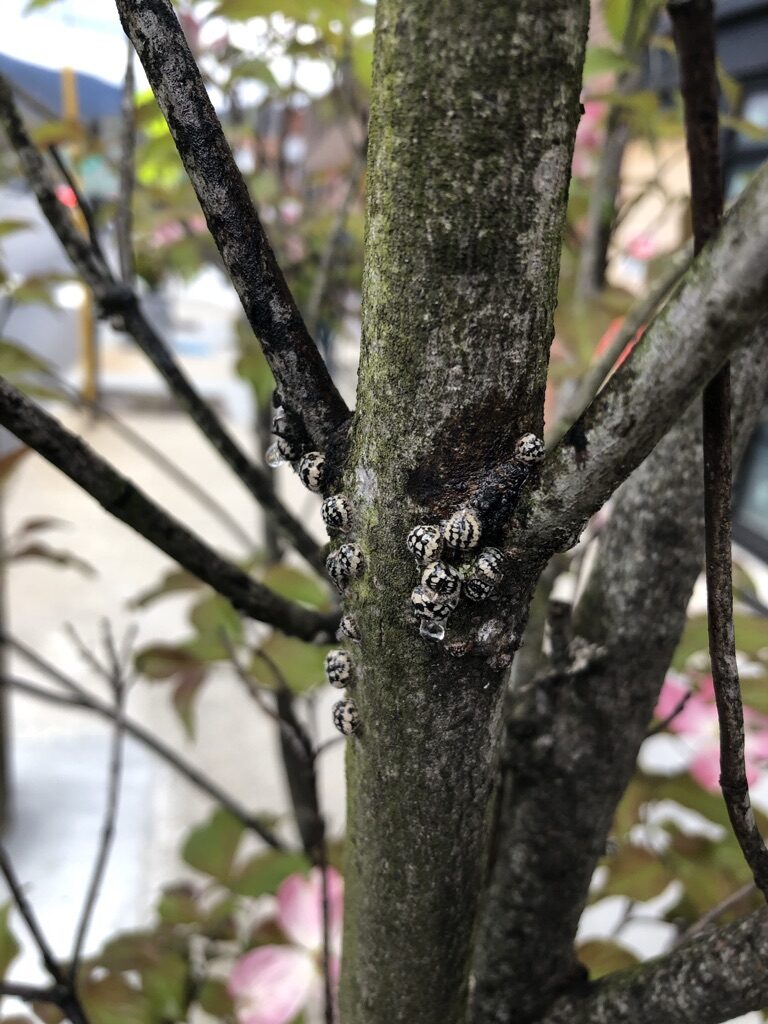Calico Scales About to Hatch!
go.ncsu.edu/readext?793625
en Español / em Português
El inglés es el idioma de control de esta página. En la medida en que haya algún conflicto entre la traducción al inglés y la traducción, el inglés prevalece.
Al hacer clic en el enlace de traducción se activa un servicio de traducción gratuito para convertir la página al español. Al igual que con cualquier traducción por Internet, la conversión no es sensible al contexto y puede que no traduzca el texto en su significado original. NC State Extension no garantiza la exactitud del texto traducido. Por favor, tenga en cuenta que algunas aplicaciones y/o servicios pueden no funcionar como se espera cuando se traducen.
Português
Inglês é o idioma de controle desta página. Na medida que haja algum conflito entre o texto original em Inglês e a tradução, o Inglês prevalece.
Ao clicar no link de tradução, um serviço gratuito de tradução será ativado para converter a página para o Português. Como em qualquer tradução pela internet, a conversão não é sensivel ao contexto e pode não ocorrer a tradução para o significado orginal. O serviço de Extensão da Carolina do Norte (NC State Extension) não garante a exatidão do texto traduzido. Por favor, observe que algumas funções ou serviços podem não funcionar como esperado após a tradução.
English
English is the controlling language of this page. To the extent there is any conflict between the English text and the translation, English controls.
Clicking on the translation link activates a free translation service to convert the page to Spanish. As with any Internet translation, the conversion is not context-sensitive and may not translate the text to its original meaning. NC State Extension does not guarantee the accuracy of the translated text. Please note that some applications and/or services may not function as expected when translated.
Collapse ▲Calico scale, Eulecanium cerasorum, was accidentally introduced to California from Asia in the 1920s. It has now become established in many eastern and north-central states. Calico scales attack maples, honeylocust, hackberry, dogwood, walnuts, stonefruits, sweetgum, and many other tree species. Calico scale adults and immatures feed on phloem. They produce copious amounts of honeydew, coating underlying leaves and surfaces and promoting sooty mold growth. Heavy infestations can lead to loss of tree vigor, foliage distortion, and branch dieback.
There is one generation per year. The scale overwinters as a second instar nymph on the bark. Each female can produce up to 4,600 eggs. Once eggs are produced the female shrivels and dies, becoming darker brown. Crawler emergence is happening soon. I have seen adults swollen with eggs in Raleigh and in the mountains this week. The tiny crawlers settle and begin feeding on foliage, where they remain through mid-October and then migrate back to the bark to overwinter.
There are many natural enemies that feed on calico scales but on street trees, nurseries, and other stressful locations the scales will still thrive. Applications of insecticidal soap can reduce populations especially during crawler emergence. Insect growth regulators like pyriproxyfen and buprofezin can also be effective if needed.



